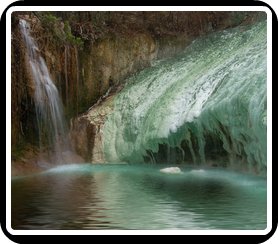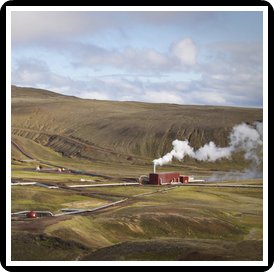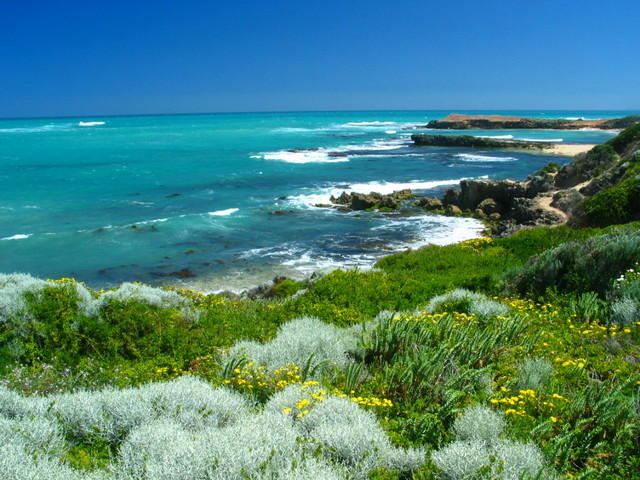Geothermal Energy: Clean, Renewable, Economical, and Environmental Friendly
Geothermal Energy is another renewable alternative resource which is created by heat retained underneath the earth's crust, formed from radio active decaying minerals, and from solar energy absorbed at the surface.
Geothermal Gradient is the difference in temperature between the surface of the planet and it's core. Continually driving conductive energy in the form of heat to the surface, and the earth having the ability to maintain it's temperature makes it a renewable energy resource.
Geothermal Energy

Geothermal Heat
Geothermal Heat is produced from naturally occurring steam and hot water from underneath the earth that can directly heat homes, and indirectly produce electricity. Areas where the ground is colder than room temperature, heat can be extracted with a Geothermal Heat Pump which can be used almost anywhere to provide Home Heating.
Geothermal Heat has a wide variety of applications such as: Space Heating, District Heating, Domestic Hot Water, Spas, and Agricultural Applications.
Where the ground is shallow, hot but dry, water or air can be circulated through Earth Tubes or Down Hole Heat Exchangers that can act as heat exchangers with the ground. Heat Pumps can force the transfer of heat from the ground to a building using shallow ground water temperatures starting at (10-12 degrees Celsius, or 50-54 degrees Fahrenheit) as a source of heat which can be transferred from a cool space to a warm one against the natural direction flow.
These Heat Pumps can enhance the flow of heat from a warm area to a cool one by extracting the heat from the ground in the winter, and by transferring it back into the ground in the summer.
Geothermal Electricity
Geothermal Electricity requires high temperature energy created from deep underground, where heat is carried to the surface by fluid circulation. This is done either by natural means like Hot Springs or Geysers, or by artificial means such as Drilled Water Wells. With the steam from this geothermal energy, turbines can be run by driving generators for the production of electricity. Geothermal Energy once known for bathing and space heating is now recognized for its electricity.
Geothermal Electricity Systems, also called Enhanced Geothermal Systems can be used to access the earth's heat where subsurface water and permeability are lacking to create power. Three sources of these power plants are: Dry Steam, Flash Steam, and Binary Cycle.
Through research and development, Geothermal Electricity is fast becoming more cost efficient and can compete with Fossil Fuels when it comes to environmental issues. The power plant at the geysers in California U.S.A., has been very successful in producing electricity.
Chevron Corporation known as the largest private Geothermal Electricity producer, accounts for more than half of all privately developed power, with electricity produced by Chevron Geothermal Operations being sold to local power Grids.
In 2013 (I G A ) The International Geothermal Association reported twenty-four Countries online generating geothermal power with more countries expected in the coming years.
Geothermal Energy requires no fuel and has no fuel fluctuations, but capital cost can be high if not near Tectonic Plate boundaries. Recent technologies though, have expanded the range and size of usable resources used for direct electricity generation, home heating, and cooling.

Some issues have been pollution from Geothermal Electricity Plants that might experience high levels of acids and chemicals, but these power plants are now equipped with Emission Control Systems thus omitting the chance of pollution.
Another issue is the possibility of creating earthquakes, however an Australian Study reports that the danger of earthquakes from Enhanced Geothermal Electric Plants are low, and can be reduced with proper management.
Geothermal Energy is reliable, sustainable, environment friendly, and has the ability to play a part in fighting climate change, and providing reliable base-load energy in support of other intermittent renewable energy sources.
Also see Alternative Energies
and see Geothermal-Electricity
see Geothermal Heat

Questions or Comments?
Please use Contact Form below...


